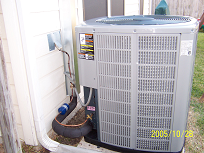 What is R-410A?
What is R-410A?
Beginning January 1, 2010 the EPA required R-410A (also known by the brand names Puron, SUVA and GENTRON AZ-20) refrigerant in air conditioning and heat pump systems. This meant that all new air conditioning and heat pump equipment produced in or imported to the U.S. must use R-410A or another non-ozone depleting refrigerant. Some manufacturers worked around this by shipping R22 or Freon units with no refrigerant within them. All others followed and with the rising cost of Freon it has become economical to switch to R-410A.
Why is this happening?
The release of HCFCs (hydrochlorofluorocarbons) into the atmosphere has depleted the Earth’s protective ozone layer, and created an ozone hole. This will help restrict the release of this manmade chemical and others that deplete this layer and help it to recover. This is a worldwide initiative started in 1989 with The Montreal Protocol on Substances That Deplete the Ozone Layer. Freon production has been cut from 110 million pounds in 2010 to only 39 million in 2013 and cost have sky rocketed.
FAQS
What air conditioning and heat pump systems may be affected?
R-22 and HCFC-22 can be found in window units, dehumidifiers, central air conditioners, air-to-air heat pumps, ground source heat pumps, and ductless air conditioners.
How can I find out if my home air-conditioner contains R-22?
Most air-conditioners have a nameplate on the unit that identifies the refrigerant it contains and other information, such as safety certifications and electrical ratings. For a central air-conditioner, the nameplate is usually on the outdoor condensing unit. If a nameplate is not provided, there are several other ways that you may be able to obtain the information. The person/company that sold or services your air conditioner would likely know what refrigerant it uses. Or, if you know the manufacturer and model number, you could call the manufacturer or check its web site.
Will I be required to stop using R-22 in my home air-conditioner or other equipment?
No. You will not be required to stop using R-22 and you will not be required to replace existing equipment just to switch to a new refrigerant. The lengthy phaseout period provided time to switch to ozone-friendly refrigerants. This transition is important because supplies of R-22 have been limited since 2010, which has caused the price of R-22 to spike at all time highs. Starting in 2020, new R-22 may no longer be produced, so consumers will need to rely solely on recycled or reclaimed quantities to service any systems still operating after that date.
What is HWA (home warranty agreements) going to do regarding the recent R-410A regulation?
1. Air conditioners and heat pumps that use R-22 can still be serviced and repaired and R-22 will still be available for use in equipment that was manufactured prior to January 1, 2010.
2. When a replacement system is necessary, a system can still be replaced with R-22 equipment as long as it is available. There is no ban on the sale of R-22 equipment.
3. When R-22 equipment is no longer available HWA will replace the failed system with R-410A equipment.
4. Home warranty plans do not typically cover the modifications required to upgrade A/C or Heat Pump systems to R-410A refrigerant. HWA offers R-410A modification coverage on every contract and with this coverage, up to $500 can be used to upgrade the system.
Note: The price of these phased out coolants and R-22 system parts will continue to rise as their availability decreases, and may take longer to acquire.
What if I own an air conditioner that needs R-22 added after 2010?
You may continue to have your equipment containing R-22 serviced after 2010, although only a limited amount of new R-22 will be manufactured (to meet the servicing needs of equipment manufactured before January 1, 2010). After 2020, production of R-22 will be prohibited and only recovered, recycled, or reclaimed supplies of R-22 will be available for servicing existing equipment. So, in the future, R-22 supplies will be more limited and costs will rise.
Are alternatives to R-22 available?
Yes, alternative refrigerants that do not harm the ozone layer are available and widely used in the air-conditioning and refrigeration industry today. Through its Significant New Alternatives Policy (SNAP) Program, EPA has found acceptable a number of alternatives to R-22 that do not deplete the ozone layer. R-410A, an HFC refrigerant blend, is the most common. Some common trade names for R-410A include GENETRON AZ-20, SUVA 410A, Forane 410A, and Puron. EPA maintains a full list of acceptable substitutes for household and light commercial air-conditioning.
I own an air-conditioning unit that contains R-22 and I want to minimize its impacts on the ozone layer. What can I do?
If you have equipment that contains R-22, the most important thing you can do is to maintain your unit properly. Major leaks rarely develop in units that are properly installed and maintained; however, any leak can have potential environmental damage and are costly. For more information on a regular maintenance program check our site or call. It is important to select a reliable service contractor. Technicians must have EPA certification to service equipment containing R-22. Technicians are required to use refrigerant recovery equipment during service. Also, request that service technicians locate and repair leaks instead of “topping off” leaking systems. This will help ensure that your system operates at its optimal level, which reduces emissions of refrigerant and saves you money by reducing your household energy use and avoiding additional repairs in the future.
For more information and FAQs on the new R-410A regulations and how they affect you, please visit the EPA’s website at www.epa.gov/ozone.
Source: EPA

